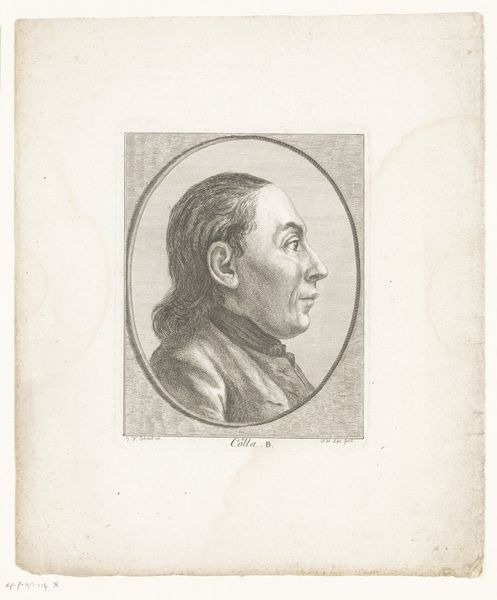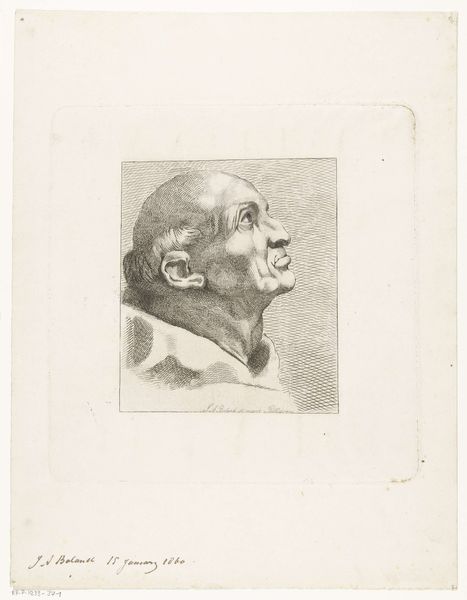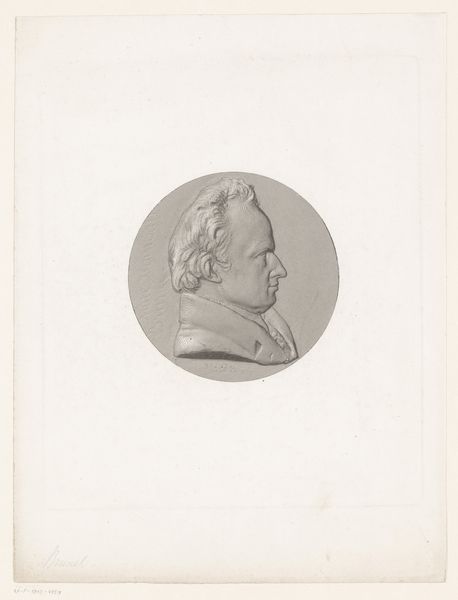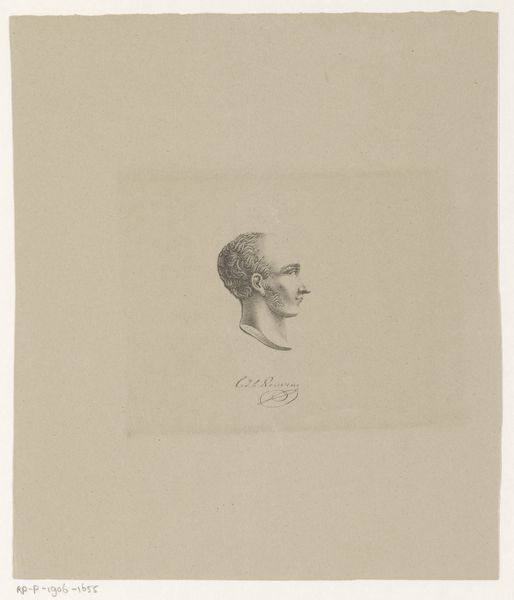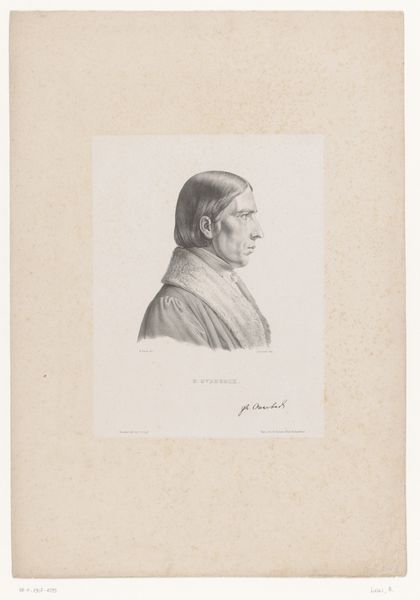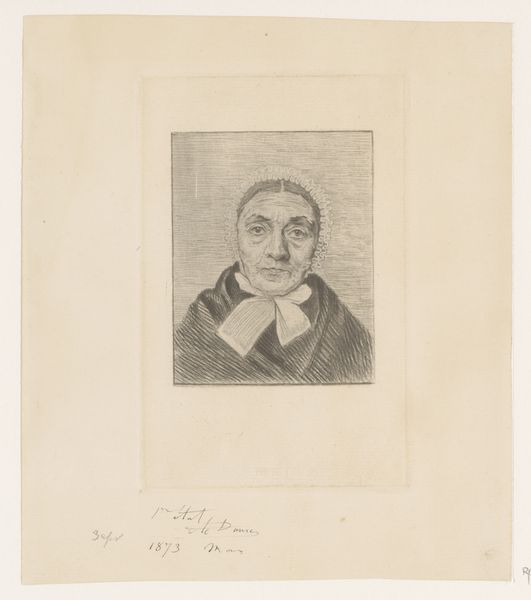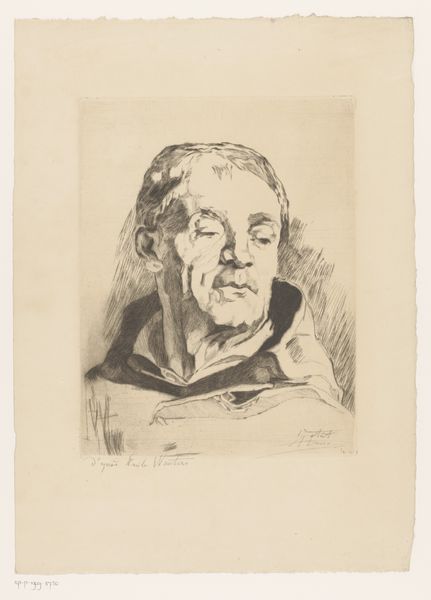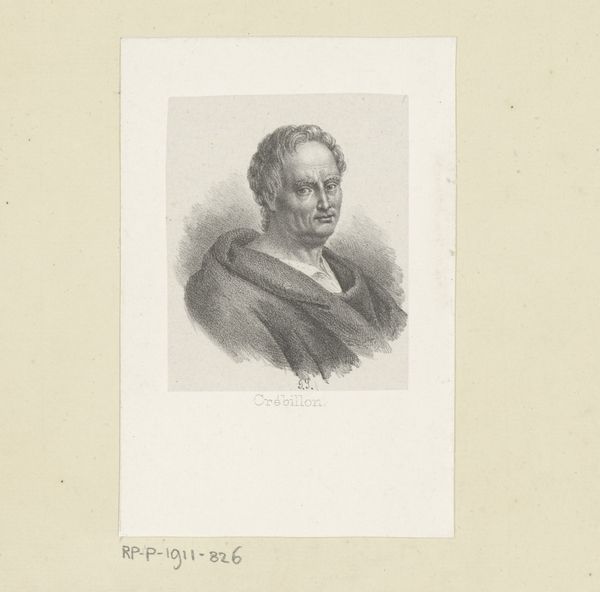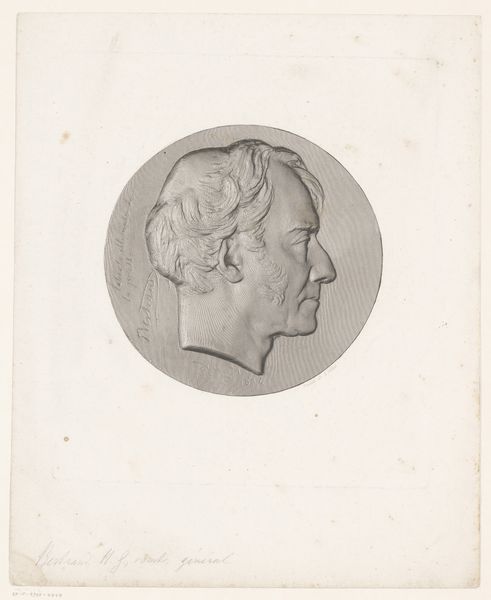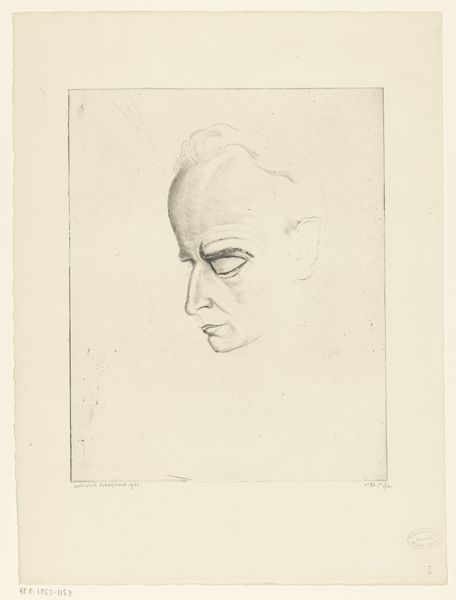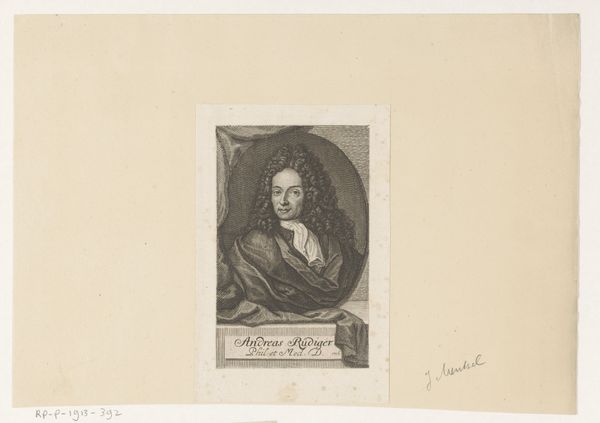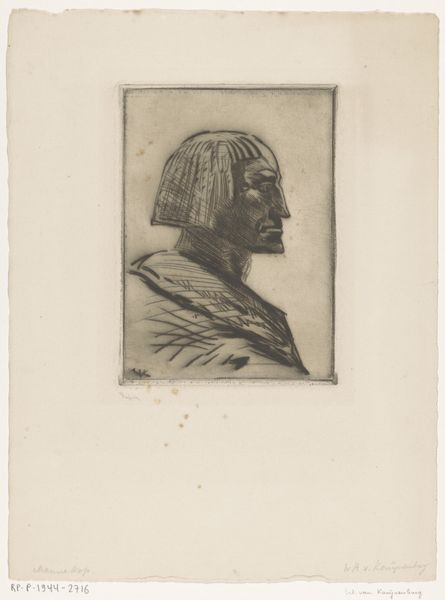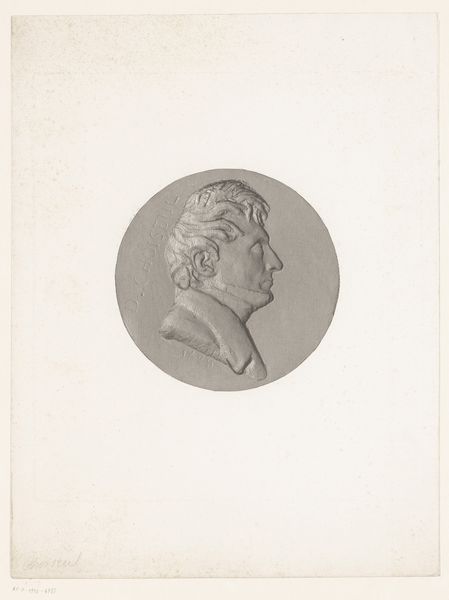
print, graphite, engraving
#
portrait
#
baroque
# print
#
pencil drawing
#
graphite
#
portrait drawing
#
engraving
Dimensions: height 190 mm, width 142 mm
Copyright: Rijks Museum: Open Domain
Editor: Here we have a work entitled "Portret van Kleinjogg," dating sometime between 1700 and 1785, attributed to Georg Friedrich Schmoll. It’s a print, and the precision of the engraving gives it an almost photographic quality despite being centuries old. How would you interpret this piece, particularly regarding its materiality? Curator: I’m drawn to how the engraver uses the limitations and affordances of the copper plate itself to create this image. Consider the labor involved: each line etched by hand, a process demanding immense skill. The matrix from which multiple copies can be struck foregrounds this tension between handcraft and reproducibility that characterizes much graphic art in this period. Note the variations in line thickness: How do those changes, dictated by pressure and angle, model form and texture? Editor: That's a perspective I hadn't fully considered. I was focusing more on the figure and less on the "making of". Curator: The social context is also important. Printmaking made images accessible to a wider audience. Portraiture, once the exclusive domain of the wealthy painted elite, becomes somewhat democratized. Consider who Kleinjogg was and who would have been interested in possessing this print? The consumption and circulation of such an image speaks volumes. Editor: So, beyond just a representation, the engraving itself tells a story about access and the evolution of art production. It makes you think about how people engaged with images differently then. Curator: Precisely. The choice of materials and the labor invested reflect evolving social and economic structures, offering a critical lens through which to examine artistic intentions and audience engagement. We might even consider the engraver as something akin to a factory worker, if factories included creative experts. Editor: This has completely reshaped my understanding of portraiture. Seeing it as a product of its time, shaped by materials and the means of production, gives it a new dimension. Curator: Indeed. Understanding the materials and their manipulation expands our insight from the subject matter, adding richness and complexity to our viewing experience.
Comments
No comments
Be the first to comment and join the conversation on the ultimate creative platform.
